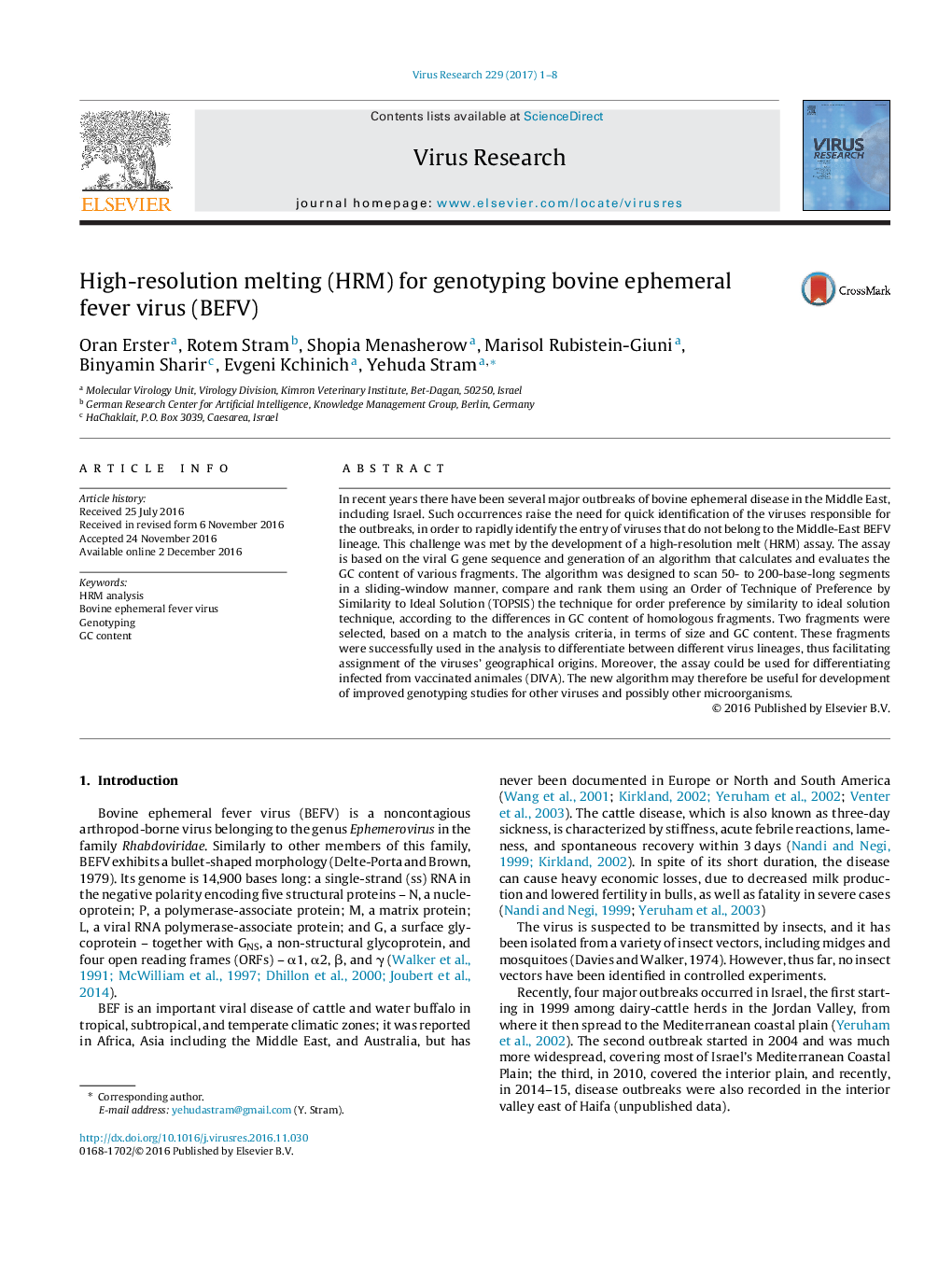| Article ID | Journal | Published Year | Pages | File Type |
|---|---|---|---|---|
| 5675414 | Virus Research | 2017 | 8 Pages |
â¢Genotyping of BEFV by HRM based on the GC content of the amplified fragment.â¢Each assay relies on the use of one pair of primers.â¢The test is constructed using our newly developed algorithm.â¢The test enables the designation of the origin of each isolates.â¢This algorithm can also be applicable for genotyping of other viruses or genes.
In recent years there have been several major outbreaks of bovine ephemeral disease in the Middle East, including Israel. Such occurrences raise the need for quick identification of the viruses responsible for the outbreaks, in order to rapidly identify the entry of viruses that do not belong to the Middle-East BEFV lineage. This challenge was met by the development of a high-resolution melt (HRM) assay. The assay is based on the viral G gene sequence and generation of an algorithm that calculates and evaluates the GC content of various fragments. The algorithm was designed to scan 50- to 200-base-long segments in a sliding-window manner, compare and rank them using an Order of Technique of Preference by Similarity to Ideal Solution (TOPSIS) the technique for order preference by similarity to ideal solution technique, according to the differences in GC content of homologous fragments. Two fragments were selected, based on a match to the analysis criteria, in terms of size and GC content. These fragments were successfully used in the analysis to differentiate between different virus lineages, thus facilitating assignment of the viruses' geographical origins. Moreover, the assay could be used for differentiating infected from vaccinated animales (DIVA). The new algorithm may therefore be useful for development of improved genotyping studies for other viruses and possibly other microorganisms.
